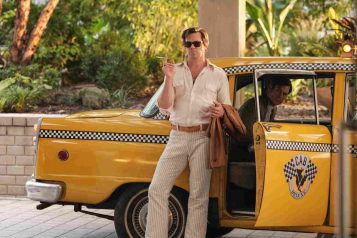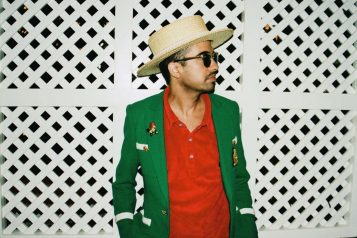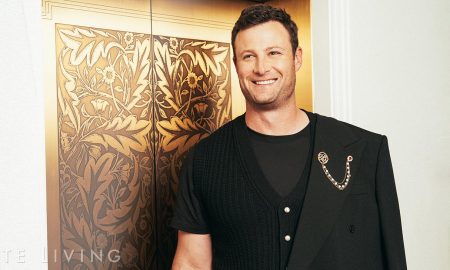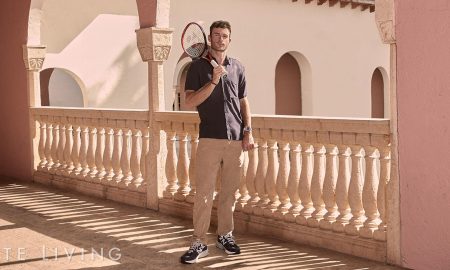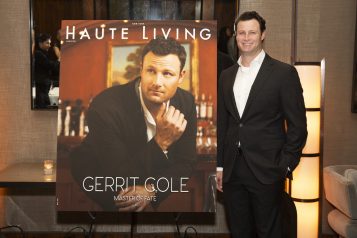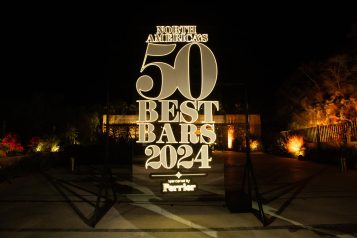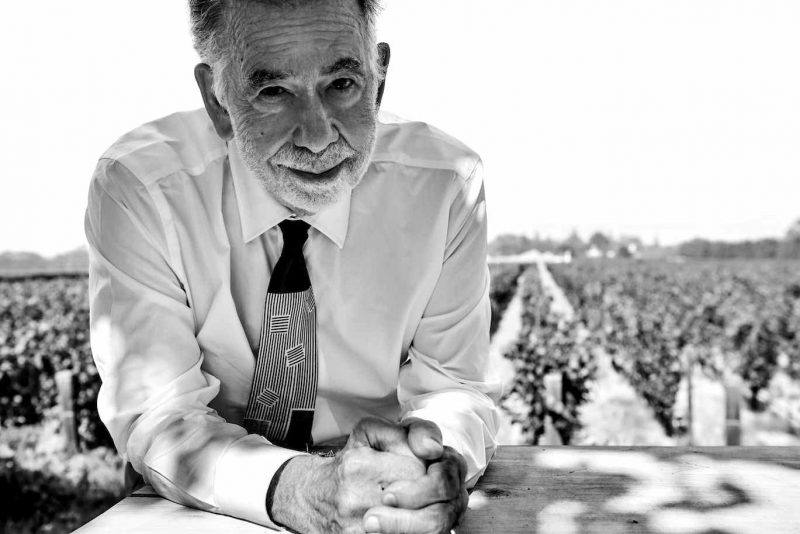 Photo Credit: Frederich Auerbach
Photo Credit: Frederich Auerbach
BY LAURA SCHREFFLER
PHOTOGRAPHY FREDERIC AUERBACH
SHOT ON LOCATION AT INGLENOOK, NAPA VALLEY
LIKE HIS WINES, FRANCIS FORD COPPOLA ONLY GETS BETTER WITH AGE. HERE’S WHAT THE ICONIC FILMMAKER HAS IN STORE FOR HIS NEXT ACT.
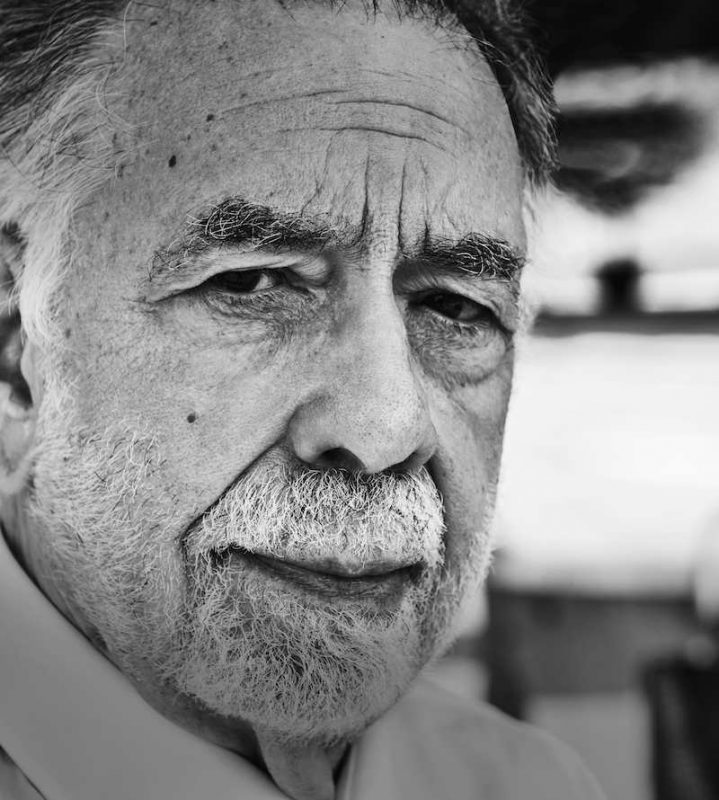 Photo Credit: Frederich Auerbach
Photo Credit: Frederich Auerbach
HE MADE THEM AN OFFER THEY COULDN’T REFUSE.
“He” would be Francis Ford Coppola, the six-time, Oscar-winning director of The Godfather. “They” are the 22 children, grandchildren, nieces, and nephews who accepted his invitation to quarantine at his Napa Valley, Calif., estate and winery, Inglenook, when the pandemic hit earlier this year. It is a testament to his generosity that more than half of said relatives are still there seven months later on this September day, while wildfires rage and the sky glows an eerie, otherworldly yellow.
Like most, Coppola desperately sought the good in 2020. But instead of soul-searching, self-development or a new hobby, he found the silver lining in his family. Because — wait for it — a man who doesn’t spend time with his family can never be a real man. Or so says Don Vito Corleone, the Godfather.
“There were so many wonderful aspects to it,” Coppola admits. “In a funny way, it was like Christmas, because we had all these grandchildren running around.”
Time has passed slowly but happily inside the beautifully insulated bubble of Inglenook. While his grandkids swam at the lake or played ball by the pool, Coppola gave the grown-ups — including himself — an education. A film education, that is (a totally separate beast from his M.F.A. from U.C.L.A.) “My greatest pleasure in life is learning, so I looked to movies to learn something during this time,” he confides, disclosing how he masterminded bi-weekly movie nights playing a personal favorite — be it a silent film, foreign flick or modern masterpiece — from his extensive collection every Wednesday and Saturday at the property’s on-site theater. And how he pulled patriarchal rank in a very boss way.
“There was no collaboration or discussion. It was my idea to do it, so I got to choose the films I wanted to choose from what I think are the greatest movies ever made.” In the interest of equality, movies could not made by a relative… which is harder than it sounds when your family is one of the most powerful in Hollywood. Coppola counts wife, Eleanor, a documentary filmmaker; younger sister Talia Shire, an actress; daughter Sofia, a director; son Roman, a screenwriter; granddaughter Gia, a screenwriter and director; and actor nephews, Nicolas Cage and Jason Schwartzman among the family’s filmmakers. (Incidentally, the only exception to his rule was the 1973 coming-of-age comedy American Graffiti, which Coppola produced.)
Aside from these edifying evenings, he’s been largely focused on his health — a journey that began, in part, because of the late, great Anthony Bourdain.
“Anthony came and visited Palazzo Margherita, our hideaway in Italy [for his CNN series, Anthony Bourdain: Parts Unknown],” Coppola recounts. “When I saw myself on his show, I felt I looked like a whale. I’ve been overweight since I was in my late 20s. If you add 10 or 15 pounds every year, in 10 years that’s 100 pounds. I was so struck with the image of myself on that show that I thought, ‘I have to do something about this.’ For the next few months, I went to a place in North Carolina called Duke Fitness, which is part of Duke University. It was like going to college in fitness, where you learn about exercise and the psychological aspect of weight gain. Obesity is complicated. It involves many, many things — not just that you eat a lot, but what you’ve inherited from your family, what your family eats, what makes you happy. At any rate, through this program, I was able to lose about 80 pounds and have now kept it off for about two years. I have a pretty good health card now; I think I’m safely out of the obesity category, which is important, especially when you’re an elderly person.”
The downside to his newfound health and wellness regime is having to cut out the things an Italian loves best — pizza, pasta and wine. He’s taking it in stride though. Again, he’s managed to find that silver lining.
“I don’t drink as much alcohol as I have in the past,” he laments. “My family enjoys cocktails before dinner, but now I do that one day a week. As for wine, I wish I could do it more often, and sometimes I do [drink more] on special occasions. But I’ve noticed that the things you give up a few days a week, you enjoy more when you do have them. If we’re going to have wine with a meal, it’s a big deal to me, so I tend to think, ‘If I’m going to drink wine, I’m going to drink the best wine.’”
But for this natural-born student, there’s more to it than simple enjoyment. “Wine is not just a pleasure with your meal,” he maintains. “Anyone who’s in the business of wine is partly an educator, because part of the enjoyment of wine is to drink it knowing more about it.”
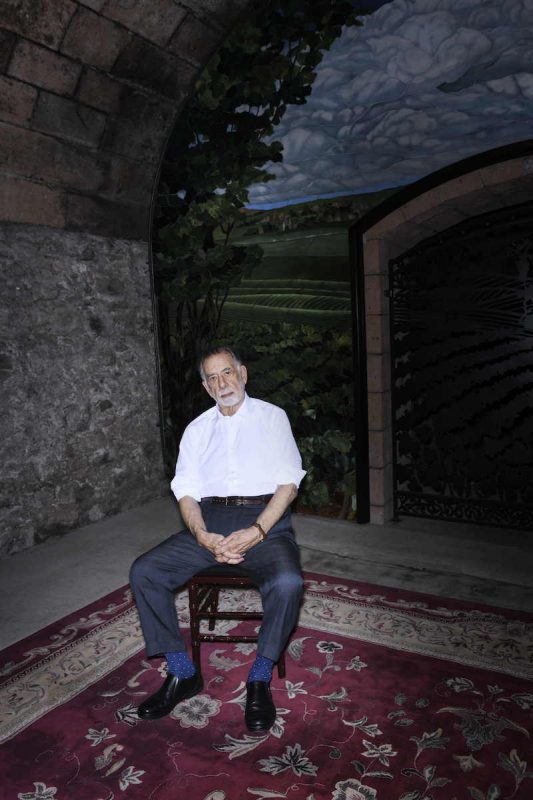 Photo Credit: Frederich Auerbach
Photo Credit: Frederich Auerbach
Which brings us to the reason we’re speaking to Coppola today. It’s our turn to receive an enology education. What we learn: for a man who never intended to be in — or had any knowledge of — the wine business, he’s managed not only to make bottled magic, but to restore and rehabilitate a national icon.
His biopic would look like this: While searching for a summer vacation cottage in Napa Valley in 1975, the then 36-year-old director and his wife discovered Inglenook, the former home and world-renowned, award-winning winery of Finnish sea captain Gustave Niebaum — the man responsible for California’s first grape-sorting table and bottling line — in the appellation of Rutherford. They placed a bid and lost, though had a second chance to purchase the property (“I got it on the rebound!”) — which was very nearly turned into a golf course — when it was declared an agricultural preserve.
“I thought, ‘We’ll buy a little house with an acre of grapes like my grandfather did, and we’ll make wine ourselves and give it to the relatives for Christmas,’” he admits. “I very naively went into the wine business.”
Coppola had not yet realized the true value of what he now possessed. He understood the basics — that Inglenook, which was established in 1860, was one of the oldest wineries in America, and one of the most famous. He knew simply being there made him happy (which is why it has become his permanent residence to this day) and that it was the “most beautiful place [he] had ever seen.”
But as he learned more about the property, he began to understand his newly acquired 100 acres yielded some of the best terroir in the Valley and, therefore, produced some of the most sought-after grapes.
An idea clicked into place: “I said to my wife, ‘If everyone thinks our grapes are so good, why don’t we make wines ourselves?’ She said, ‘What do you know about how to make wine?’ I said, ‘Nothing, but I didn’t know anything about how to make movies either, and I’ve done that.’”
He studied enology gleefully, soaking up everything he could about the process, and three years later, his newly-minted Niebaum-Coppola Estate produced its first vintage of Rubicon, a red Bordeaux-style blend. But at the time, he was predominantly a filmmaker — one of the hottest in Hollywood — and he had movies to make. While he made big-budget films such as Apocalypse Now, The Godfather Part III and The Outsiders, he was lured by Inglenook, and resolved to pursue his dream of restoring the estate to its former glory. He purchased the remaining 1,500 acres of land — including the property’s historic Chateau — with the intention of once again turning it into a winemaking facility. He and Eleanor added to their land holdings by purchasing 60 acres of one of the most sought-after vineyards in Napa — the neighboring J.J. Cohn Vineyard — in 2002.
Says Coppola, “After 15 years, I began to realize — when I had all my movie awards and I was starting to be kind of successful — that even I was misusing this beautiful property, and decided that I would only sell wines that had actually been grown there. I thought it was inappropriate to release wines from Napa property which were not grown on the property because they were so unique and special. Which meant that our other wines — the wines that we call Claret — had to go somewhere else.”
And with that, the other arm of his business — Sonoma’s Francis Ford Coppola Winery — was born.
In 2006, Niebaum-Coppola became the Rubicon Estate, and in 2011 — after relentless negotiations which took nearly four decades of dogged persistence — formally acquired Inglenook’s name and trademark, officially fulfilling what had now become Coppola’s adulthood dream. With the name finally secured, they really got down to business, with the intention of making wines reflecting the brand’s best vintages, such as its 1941 Cabernet Sauvignon, considered one of the best wines ever made, earning a perfect Wine Spectator score of 100. They did this by hiring Philippe Bascaules of the famous Chateau Mârgaux as General Manager. After spending five years at Inglenook, Bascaules returned to Chateau Mârgaux while simultaneously continuing to oversee operations at Inglenook as its Director of Winemaking. It was a baller, unprecedented move that further solidified Inglenook not just as a former legend, but as a current one as well.
Coppola’s pride at owning a winery considered among the modern-day greats is substantial. “Napa Valley is now considered even by the French as one of the great wine regions of the world,” he notes. “[Among] the biggest customers buying vineyards in Napa are the French companies, like Château Latour, which [purchased the Araujo Estate Winery] and Chanel [which owns St. Supéry Vineyard]; Château Lafitte [just purchased the Flora Springs estate]. Napa has been elevated over the years. If you buy an acre of vineyard in Bordeaux, it retails for the same as an acre of Napa. For those reasons, our wine at Inglenook is comparable to what the French call the first growth, the wine regions in the late 19th century selected as the four or five greatest wine regions in the world. We consider Inglenook to be in that exclusive grouping of the great wines of the world.”
But during the Covid era, even the best of the best are faltering. Because of America’s three-tier sales system — the winemaker, distributor and retailer are paid equal amounts — many brands, including Coppola’s, are hurting. “That three-tier system really dominates how wine is sold and much wine is consumed in restaurants, which are suffering,” he explains. “That means that the wholesalers are suffering. Basically, everyone is suffering,. Our hearts really go out to everybody.”
That said, the Coppolas are in a better position than most. With restaurants still closed or operating at diminished capacity, Americans in particular are turning to premium wines for their at-home indulgences, and Inglenook wines are the crème de la crème. Honestly though, their secret weapon is Coppola himself. The legendary director has been working tirelessly to create opportunities and come up with new innovations to increase sales. Earlier this year, he created a special package that included $800 worth of limited production Director’s Cut wine cases bundled with a first-edition, signed script of his 1974 film, The Conversation, as well as an invitation to join him for a virtual online chat.
But Coppola will do just about anything for this place he loves so well. Inglenook has not just become part of his history, but part of his family. And to Francis Ford Coppola, family is everything.
“I would tell you quite honestly what I am most proud of in my life is that I saved and restored this icon, leaving it every bit as large and even more beautiful than it was in its heyday,” he declares. “That I left it so without debt, so that in 50 years, a son-in-law or daughter- in-law won’t sell it so they can go into the helicopter business or whatever. My wish is to leave this as a national icon and family business forever.”
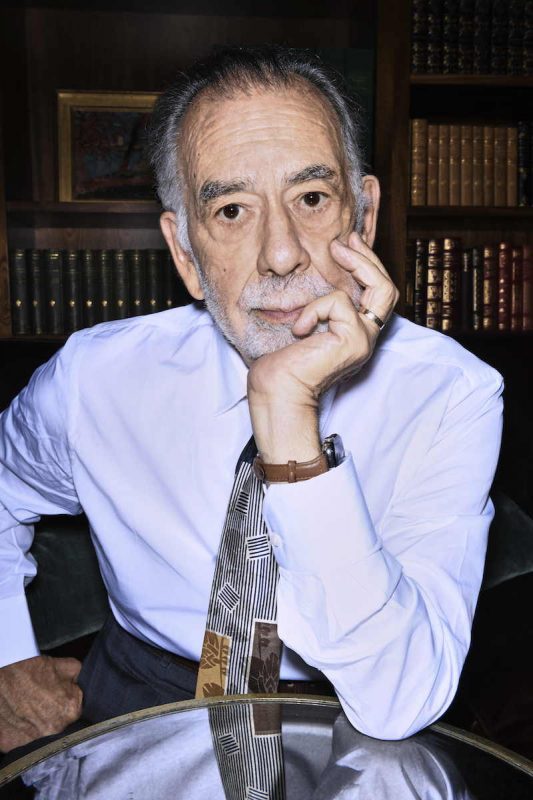 Photo Credit: Frederich Auerbach
Photo Credit: Frederich Auerbach
THERE COMES A TIME IN EVERY MAN’S LIFE WHEN HE WANTS TO RIGHT HIS WRONGS.
Even the greats have moments they’d like to relive, things they wish they had done differently. And for Francis Ford Coppola, that time is now.
Before we get into the nitty gritty, remember that this is a man who helped to shape contemporary cinema as we know it; that he is responsible for some of the most powerful, well-respected films in history, and that he is a leader in the New Hollywood filmmaking movement. After nearly 50 years in the industry, his list of accolades would take hours to recount, but to give you the general gist, we’ve included a few of the biggest.
He is one of only six people to win Oscars for Best Picture, Directing and Screenplay on the same night. In addition to his own 21 Oscar nominations and six wins, he can boast an additional 63 nominations and 15 wins through American Zoetrope, the production company he co-founded with Star Wars creator George Lucas. In addition to The Godfather trilogy, his credits include Patton (1970) and The Conversation (1974), Apocalypse Now (1979), The Outsiders and Rumble Fish (1983), Bram Stoker’s Dracula (1992) and The Cotton Club (1984), among countless others. Coppola is responsible for launching Lucas’ career, as well as those of Al Pacino, Diane Keaton, Robert De Niro, Robert Duvall, Richard Dreyfuss, Harrison Ford and Rob Lowe, among others.
He is a living legend.
But not even legends always get their way, and such is the story with The Godfather Part III. The 1990 film is largely considered to be the weakest link in an otherwise flawless trilogy, one which completely revolutionized the Hollywood gangster film, with its predecessors widely heralded as two of the best movies in film history.
Which is why Coppola decided to do something about it. This December, The Godfather Part III will become Mario Puzo’s The Godfather, Coda: The Death of Michael Corleone, the film he really wanted to make. Paramount will give the movie a limited theater release in honor of its 30th anniversary, to be followed by digital and Blu-ray.
Coppola, who also recently restored his 1984 crime drama, The Cotton Club, has plenty to say about his decision. “I read an article recently where someone reacted negatively to the fact that there was about to be a new third Godfather, and the person wrote, ‘Did Leonardo [da Vinci] experiment with the Mona Lisa 20 years later?’ In truth, he did,” he says. “The reason the Mona Lisa – and I’m not comparing myself to Leonardo, but just as an example – is in Paris is because Leonardo was invited by the Queen of France, Catherine de Medici [to live at court]. The only painting he brought with him was the Mona Lisa because he wasn’t quite satisfied with it and was still working on it even 20 years after he had painted it.”
The Godfather III is his Mona Lisa, and the changes he made were with care, seeking to improve on the original. “I had the idea to call the second Godfather Part II, and I forced it, because at the time when the second film came out, I had a lot of power,” he clarifies. “But when the third Godfather was written and conceived, Mario Puzo, the author, and I wanted to call it The Death of Michael Corleone. We thought it wasn’t a third part, but more of a coda, an epilogue.”
But Paramount had different ideas. “That’s when Paramount was a different administration, with different owners, and wanted [the franchise] to be three, four, five films — as many parts as they could get — so they insisted [on the name]. It was also given a very ambitious Christmas release date. It was one of the first movies to come out on Christmas Day, so there was a mad rush to get it done,” he explains, noting, “There is a lot of stupidity that goes on around a movie release. Filmmakers are pressured to do things that they don’t always think are the best. Over time, I always felt that it was the wrong title and certain decisions made getting the film out so quickly could have been better handled. But it was a big, complicated film and we did our best.”
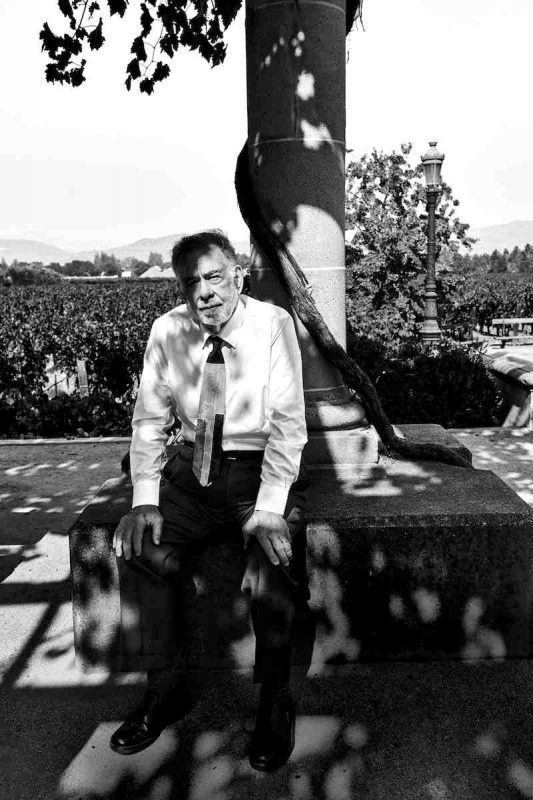 Photo Credit: Frederich Auerbach
Photo Credit: Frederich Auerbach
That being said, “If you’re in a position to correct that, even years later, why not take it? It’s not unusual for a novelist or filmmaker to learn [how to perfect their art] with a little more time and perspective, and that’s all I feel [The Godfather Part III] needed. I’m now in a good position [to make those changes], because at this old age, I own some of my other films.”
Said changes include an overall alteration to the film’s rhythm and flow — a new beginning, middle and ending; and several cuts throughout to tighten the nearly three-hour gangster drama. These adjustments, he admits, are as much for the audience as they are for himself. “It’s very important to understand that the audience’s reaction to the movie is essential to what the filmmaker is trying to do,” he says. “You can’t divorce the two. When a movie is coming out, you have to be concerned about the way it’s received by the public, because that’s going to seal its destiny.”
He pauses, warming to his theme, and continues, “A movie is an illusion — sometimes I wonder if people understand that. When people go into a theater and see a movie, all of the emotion, all of the humanity, isn’t in those flickering shadows on the wall, it’s in the audience. The audience sees an illusion that tricks them to unleash all of this emotion. If the illusion doesn’t work or fails to come alive, then those emotions aren’t triggered. They’re not just seeing the movie, they’re seeing the movie within themselves. The audience is the living thing.”
Audiences — much like Coppola himself — have been waiting for the director to return to making films, the last of which was 2016’s Distant Vision, a coming-of-age story about a teenage Italian-American boy and girl. And perhaps they wouldn’t have had to wait quite as long had the coronavirus not virtually shut down Hollywood. As such, the future is uncertain — which doesn’t bode well for Megalopolis, the futuristic sci-fi opus revolving around an architect (reportedly played by Jude Law) intent on creating a utopic New York, that the director has been trying to get made for the past two decades.
“To get me to talk about the future when no one knows what the future is, at this point I have no idea what that’s going to look like,” he admits. “I know we’re going to be in a different world [when it’s time to start working on that project]. I have no idea what the world post-pandemic will be.”
Of one thing we can be certain: it certainly won’t be the utopia of his fantasies. That being said, when a vaccine is in place, the reality of what he’ll do first is crystal clear — and it won’t be hunkering down immediately to make a film after months of isolation. “I’ll travel to some of the places I haven’t been able to visit,” he says. “There are some places I hope to see before I go to the next transition.”
He’s in a good position to do so considering he owns what he refers to as “Hideaways” around the world — boutique hotels in Belize, Guatemala, Argentina and, of course, Italy given it’s his heritage — places he actually stayed and fell in love with while filming various projects.
“I found myself owning a little place in Belize, a little lodge I originally bought because I thought I could write there,” he says. “To protect it, I had to have caretakers and then to pay the caretakers, I found myself in the hotel business. It became a pattern. If it I had to make a film in Argentina, the place I was living in became a boutique hotel. I ended up with a place in Guatemala by the beach. Wherever life took me that I fell in love with, I wanted a place of my own. Then, it had to be made into what we call a Hideaway in order to pay its bills.”
He’s quick to note these properties were never originally created to make money, to be profitable business investments. They were only born out of love, as so many of his projects are. “I learned — after losing a lot of money doing some dumb investments — that the best thing to do is do the stuff you love,” he says. “The odds are, that even if you lose money, you’ll still be doing what you love.”
 Photo Credit: Inglenook
Photo Credit: Inglenook
And when it comes to travel, it’s always best when he’s sharing it with the people he loves. Let us remind you that to Francis Ford Coppola, there is nothing more important in life than family and friends.
“I have a little thing I do with my grandchildren,” he divulges. “When they’re 9 years old, I take them — alone with me — anywhere in the world that they’ve always wanted to see. I’ve done it with three of my grandchildren and I have six of them, so I have three to go.”
Nine is an important year to Coppola. It was the age he was bedridden with polio. He could not walk, much less travel. Bed-bound, he created homemade puppet theater productions, using his imagination to escape his circumstances. He wants to make sure his grandkids have the experiences he lost at their age.
Which is why, now, when he could be considered the “don” or the “patriarch” of his family, he sometimes feels like one of his grandkids. “In my heart, I’m more like a 6-year-old,” he says. “I remember the 6-year-old me very well, and I’m still very similar to that person; I’m still a little kid. I went to about 25 schools before I even went to college [he attended Hofstra University in New York on a playwriting scholarship before moving to Los Angeles for grad school, where he earned a M.F.A. from UCLA’s prestigious School of Film, Theater and Television]. As a result, I always felt apart. And then I had polio for a year, and kids don’t hang out with kids who have polio, because they were frightened of them. I always wanted to be one of the group. With my family, I’ve gotten my childlike dream. I’m part of the group.”
That child-like part of him is apparent, and very genuine. He certainly has no ego, which is outstanding for someone of his caliber. He is pragmatic about his career, but a little self-deprecating, as if he doesn’t believe his own hype. This is apparent in his recollection of a conversation with his father, Carmine Coppola, with whom he collaborated on several projects, including The Godfather Part III (which actually earned Carmine an Oscar). “My father was always struggling with his career,” says Coppola. “I once said to him, ‘Are you as great a composer as Beethoven or Mozart?’ He said, ‘Well, no, I’m not.’ I said, ‘Are you the worst?’ He said, ‘No, I’m certainly not the worst. There are many worse than me.’ So I said, ‘You’re somewhere between the worst and the best, and that’s a wonderful thing.’ That’s how I feel about myself. I don’t see myself as a big deal or big shot. Even when you hear me talk about myself in relation to other filmmakers, I’m proud that I’m one of the group of filmmakers who are important in my generation. To me, it’s not vital to be considered one of the five most important; I just want to be somewhere between the best and the worst. And that’s what I am, let’s face it. Compared to the greats, I’m a second rate film director, but I’m a first-rate, second-rate film director.”
Frankly, Francis, we disagree. To quote Don Corleone himself, we must remind you: “Great men are not born great, they grow great.”
Indeed, Francis Ford Coppola has finally struck the perfect balance – not only in his personal legacy as a film director, but in the larger context of winemaking, where his accomplishments in film have afforded him the luxury of an enormously impactful and rewarding second career..
“The secret of life is balance,” says Coppola. “It’s certainly the secret of winemaking. How to balance these wonderful elements that we have, and how to balance life so that we get the full enjoyment without the destructive parts.”








